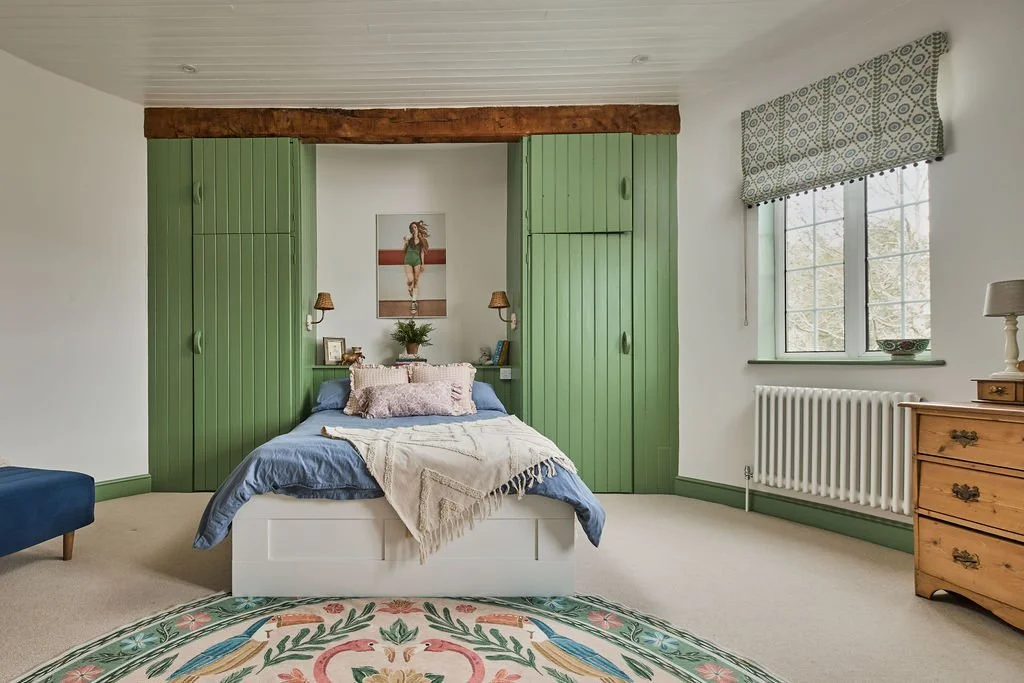Ten tips for decorating an oast house
Oast houses are the gems of the countryside in the South-East. Iconic, historic, and a symbol of our agricultural roots, it’s no wonder that many of these beautiful buildings have been converted into dwellings. Along with barns and farmhouses, they boast country charm, and with an oast house you’re getting bags of features around which to create a truly memorable home.
Early oast houses were simply adapted barns or cottages, with conical roofs added. In the 1800’s the roundel design that many of us associate with Kent became popular as it was believed to be more efficient, and then again in the 1900’s the design largely reverted back to square buildings. Commercial oast houses which were much larger followed later, with internal kilns and without the distinctive individual chimneys.
If you are lucky enough to have an oast house, you’ve got something pretty unique, and no doubt it turns the heads of passers-by and visitors! However, as with any older agricultural building there are certainly challenges in maintenance, design and decoration to consider.
At Willow & Bert we’re something of specialists in the oast house department! Chloe once lived in an oast, and Sarah was part of a team that converted an ex-commercial oast house into a large kitchen and furniture showroom. We’ve put together our top 10 tips to help you tackle those tricky roundels, windows & more …
Conservation: Many oast houses are listed, and/or fall into Conservation Areas. Understanding the listing and how it applies to any work (even just decorative) that you are considering will be vital. Different types/ages of oast house will have been built using different materials and methods, so paint types that allow these materials to breathe, prevent moisture build-up and decay will help preserve the building.
Square vs. round: The shape of your room(s) will have a huge impact on how the light behaves in your oast. Shadows will fall in different places, and a light colour scheme will enhance the sense of space in a round room. Don’t jump into a colour decision too quickly, especially if the property is new to you. Take the time to do some large test patches (large test sheets painted onto lining paper that can be moved around are a godsend!) and see how the colour behaves at different times of the day and in different weather conditions.
Scaling up: Oast houses may not all be huge, wide spaces, but they certainly are tall. And this vertical space can feel vast and empty if left unaddressed. In our Horsmonden oast project we installed a statement modern pendant light, hung from the centre of the oast cowl. This acts as far more than just lighting – it’s part art installation, too.
Bespoke furniture: Conventional furniture is made for conventional homes … and an oast is certainly not conventional! So a good investment – especially for key rooms such as a sitting room or kitchen – could be some bespoke pieces that really work with the shape and scale of the building.
Angles: It’s not something most of the population have to think about, but it can be tricky to hang a flat picture in a beautifully curved roundel! This means a creative approach to artwork and wall decoration in roundels is needed. Murals are a great solution to this problem, and can also be designed to any size, so you can really go to town and fill the big space that you have.
Heat: Converted farm buildings are rarely warm places! If you’re undertaking a full renovation and will be tackling flooring, then underfloor heating would certainly be a worthwhile investment (and also solves future design issues around radiators against curved walls!). Carpets, chunky wool rugs and interlined window dressings will all help keep a big building as cosy as possible.
Window considerations: Older agricultural buildings often have very small windows in unconventional places – these can sometimes be very high, or very low! This can be a challenge for window dressings, so working with an expert will help you find the best solution for each window. For difficult to access windows, thinking through the control of the curtains/blinds will be key, and motorisation could be a good investment.
Lighting: Oast houses boast incredible features such as the tall kilns, wooden beams and exposed brickwork, and highlighting these will make for an atmospheric and interesting home. Directional lighting will be your friend here – and this also gives you flexibility to change the angles of lights with the seasons. And as always, we advocate dimmer switches everywhere!
Connection: Many oast houses are linked to (what would have been) a main barn or other farm buildings. Decorating these areas in a way that keeps the connection between the oast and the barn is key – consider a continuation of colour scheme, a runner, artwork and lighting that reflects the colours and finishes in the oast section.
Old meets new: Oast houses are the perfect backdrops against which to blend antiques with more contemporary styles. Their industrial beams, cowls, and even remnants of hop presses and machinery work really well with modern pieces and bold colours. Take a look at our Horsmonden project for inspiration!
At Willow and Bert, we can help you with all your interior design needs. If you’d like our help with your home, get in touch and we can support you to create something you love.




